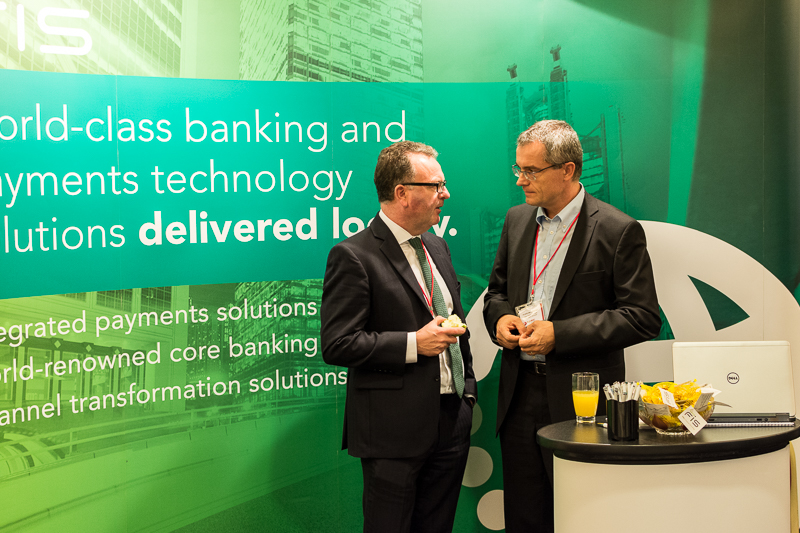In European collateral management, the difference between leading firms and laggards is access to intelligence. While some institutions scramble to understand regulatory shifts after they happen, the smartest professionals position themselves where market-shaping insights are born.
In the high-stakes world of collateral management, success is anticipating what’s next. As liquidity pressures mount and new technologies continue to reshape post-trade operations, leaders can’t rely on static strategies or delayed insights. The professionals who excel in this environment are those who seek out knowledge. One of the places they consistently turn to is the Collateral Management and Securities Lending Forum.
Key Takeaways:
- Collateral management is now a strategic function.
Collateral management has become essential for financial stability, liquidity efficiency, and regulatory compliance. Firms that enhance this function are better equipped to reduce costs, mitigate risks, and achieve long-term returns.- Forums offer insights you won’t find online.
Events deliver real-time updates, case studies, and policy-shaping insights that go beyond what’s available in reports or webinars.- Actionable solutions meet real-world challenges.
Attendees leave with tangible strategies for optimizing collateral across asset classes, navigating settlement, automating margin processes, and building operational resilience through technology.- Networking is a strategic advantage.
Forums and conferences provide curated networking opportunities with buy-side and sell-side leaders, regulators, and fintech providers. They open doors to partnerships, benchmarking, and peer collaboration. Why Smart Leaders Don’t Skip Collateral Forums.
The New Role of the Collateral Manager in a Changing Market
Collateral management has transformed from a simple operational task into a vital strategic component of modern finance. This change happened due to growing market regulations, an increase in non-cleared derivatives, and market volatility. Today, the collateral function is connecting to a firm’s overall strategy and risk management practices. Financial institutions have recognized that ineffective collateral management can directly threaten risk control and profitability. Consequently, collateral teams have become essential to economic resilience.
Successful collateral managers today operate at the intersection of three core areas: regulation, technology, and strategic planning. Navigating UMR, SFTR, EMIR, and now the EU’s T+1 implementation requires deep regulatory knowledge. The ability to automate processes, interpret real-time data, and collaborate across functions is also critical. To perform better, the firms should blend regulation, technology, and strategy into an integrated approach to collateral management.
According to insights shared in the Cassini Systems report, PGGM leverages predictive analytics to align collateral usage across products and portfolios, minimizing funding costs and mitigating over-leveraging. Their approach gives PGGM’s team more flexibility during challenging times of market volatility.
Another powerful example comes from Cassini Systems, which reported a 250% surge in demand for collateral optimization solutions amid increased funding pressure. Their clients range from global asset managers to banks. They are using advanced analytics to reduce margin posting costs, respond to UMR requirements, and adjust inventory dynamically. According to Cassini, these tools are helping clients “significantly reduce the cost of carry and funding” by improving pre-trade decision-making and cross-product optimization.


These examples reflect an industry trend: collateral management should be data-driven and included in the business strategy. To lead in that environment, collateral professionals, except for their professional skills, need a specific soft-skill set:
- Data fluency: Leaders must interpret and act on real-time margin, asset eligibility, and exposure data across multiple systems and jurisdictions.
- Agility: With shifting market conditions and regulations, collateral teams that move fast and adapt early to the market’s conditions will stay ahead of stress.
- Collaboration, communication, and influence: collateral professionals now work closely with treasury, trading desks, compliance, and tech.
Why Collateral Forums Are a Strategic Must in 2025
For professionals responsible for navigating today’s complex collateral management landscape, forums like the 19th Annual Collateral Management and Securities Lending Forum are like strategic accelerators. In 2025, the pace of change is too fast and the risks too significant for siloed decision-making. Events like this bring the right people close to you at the right time.
Forums are more than conferences
What sets this forum apart is its depth and relevance. With 20+ expert speakers from institutions such as the European Commission, ICMA, CACEIS, PGGM, and other attendees, gain direct access to the minds shaping European repo, collateral, and settlement policy. They’re grounded in the day-to-day pressures of managing liquidity, mitigating counterparty risk, and driving down posting costs in the face of regulatory deadlines.
One of the key topics at this year’s forum is market resilience. Sessions will explore how firms are adapting repo strategies to cope with volatility and rising interest rates, while also complying with new margin and settlement requirements. The forum provides clarity through panels and case studies from those already in implementation phases, offering practical steps and hard-earned lessons.
From Collateral Optimization to Stress Resilience: What You’ll Learn
At its core, the Collateral Management Forum is designed to deliver applications. Attendees will hear about market trends so that they can walk away with tested strategies and real-world tools they can apply to current challenges like funding stress, compliance navigation, or upgrading infrastructure. We tailored sessions for immediate impact.
Real-time discussions about collateral management hot topics
Liquidity pressure remains one of the most significant operational risks facing collateral teams. Between rising interest rates, UMR-driven margin complexity, and the persistent challenge of managing high-quality liquid assets (HQLA), many firms have less budget. Still, they are forced to work more to achieve stable and improved performance.
A standout feature of the 2025 agenda is its focus on multi-asset collateral optimization. Firms now operate across multiple jurisdictions, asset classes, and counterparties. Sessions will explore how buy- and sell-side players are using dynamic allocation models to balance risk, liquidity, and cost across equities and derivatives.
The forum also brings real-world examples of how technology is transforming collateral management operations. Attendees will hear case studies and vendor demos featuring the use of smart contracts for margin automation, AI-driven models for exposure forecasting, and blockchain-based verification tools that reduce reconciliation errors and increase processing speed.
To ensure these insights are actionable, the Collateral Management Forum includes powerful presentations and interactive panels, designed to move quickly and spark discussion. Speakers from Nordea, CACIES, and Euronext Clearing will share their own experiences in implementing new frameworks, testing vendor platforms, or integrating across fragmented legacy systems.
By attending, collateral professionals gain clarity on how to adapt new tools and strategies and how to lead their teams. From liquidity optimization to digital transformation, the sessions are crafted to deliver the kind of value that makes an immediate difference when back at the desk.
The Collateral Management and Securities Lending Forum 2025 takes place from 8–9 October in Amsterdam.
Download the full agenda to explore key topics and speakers, or follow us on LinkedIn for the latest updates and insights.
Beyond Content: What to Expect From the Forum
The agenda of the Collateral Management and Securities Lending Forum 2025 will provide actionable insights. However, the real strategic value often unfolds between sessions. For today’s leaders in collateral management, the relationships built at this forum are as critical as the content itself. In an industry driven by trust, timing, and collaboration, a strong and valuable connection is everything.
Networking is an essential part of each valuable conference. Through structured engagements like curated roundtables, panel Q&As, and live polling, attendees engage in outcome-driven discussions. The forum also includes informal moments designed for deeper connection, such as the “Know Your Peers” cocktail reception and networking pauses that allow for off-the-record conversations.
What sets this forum apart is the depth of interaction, delegates are comparing frameworks, testing ideas, and exploring potential collaborations. Conversations often continue beyond the event, leading to pilot projects, advisory partnerships, and even vendor evaluations.
For many, the forum serves as a rare opportunity to benchmark collateral management practices against peer institutions. Leaders gain a sense of how others are approaching T+1 readiness, margin call automation, or tri-party optimization from the people doing the work. Walk through the networking areas of this forum, and you’ll find yourself surrounded by the professionals who are writing the playbook for European collateral management.
Where Strategy Happens
The collateral management environment stands at a pivotal moment, caught between the need to modernize and the realities of legacy infrastructure, finite resources, and growing regulatory pressure. Technologies like smart contracts, AI, and real-time monitoring are expected solutions that, without accurate data, cross-functional collaboration, and a willingness to evolve, could fall short.
As competition sharpens and liquidity pools stretch thinner, observation and watch are no longer a safe option. The firms that succeed will be those that adopt a balanced approach that should be digital when it counts, strategic where it matters, and informed by insights from across the ecosystem.
Join the forum and lead the collateral change.


